Forde Minutes: Ohio State’s Emotional Win, the Latest Coaching Carousel and Don’t Mess With the NCAA Tournament

Forty names, games, teams and minutiae making news in college basketball, where South Florida is the latest school feeling the thrill of an unexpected arrival as a contender:
One month to go, and everyone is up in their feelings
One of the most reliably endearing things about this sport is that, come the back half of February, it finds another gear. Football is a furnace of intensity from Labor Day weekend onward, but basketball is a slow build. And now, inside a month until the NCAA tournament field is revealed, the going gets weird and the participants get wound up.
On Sunday alone, the average college hoops fan could have turned on TV and seen the following:
A former president of the United States at an SMU Mustangs game looking like Flavor Flav (1) as the home team annihilated the former contender known as the Memphis Tigers.
An interim coach fighting back tears immediately after taking down the No. 2 team in the country in his debut game. Jake Diebler (2), appointed as coach of the Ohio State Buckeyes on Wednesday, took down the juggernaut Purdue Boilermakers to go 1–0. (Roughly 24 hours earlier, the NCAA tournament selection committee anointed the Boilermakers its overall No. 1 seed in its early top-16 reveal.) He should consider immediately retiring, because it might not ever get better than that.
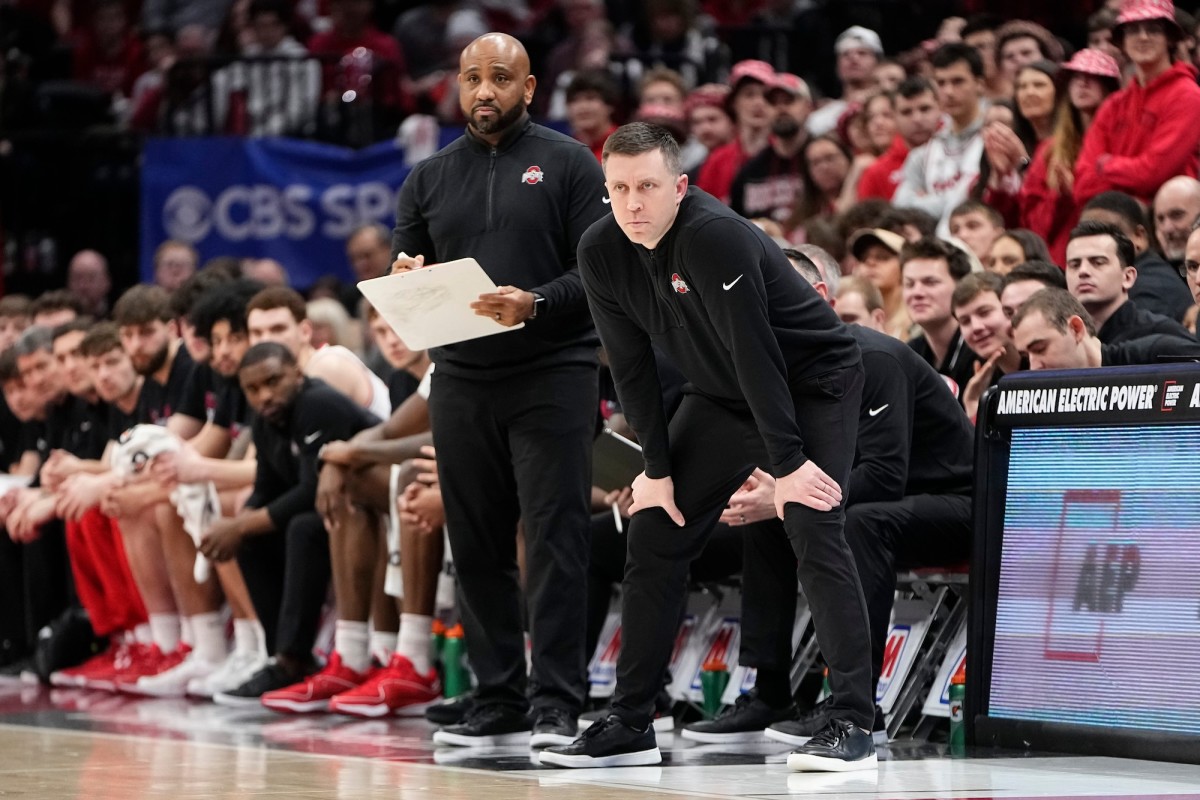
A buzzer beater in a hallowed arena from a guy who was viciously decked by a cheap shot to the throat earlier in the game. If the bubblicious Utah Utes make the Big Dance for the first time since 2016, frame the putback by Branden Carlson (3) as the moment that made it happen. He ended a thrilling road game against the UCLA Bruins in Pauley Pavilion with a hustle play off a brilliant play design by Craig Smith. Now we’ll see whether UCLA guard Sebastian Mack faces a suspension for the elbow that got him ejected.
Late February also means it’s time for coaches to crank up their peacocking. They’re much more human than their football counterparts, in all the good and bad ways—warts and beauty marks both right there for public viewing—not many robots in that fraternity. Which means we are treated to displays like we got from two Hall of Famers on successive days.
There was the Kentucky Wildcats’ John Calipari (4) crowing in victory Saturday night over the Auburn Tigers. Before even sitting down for his news conference after arguably the best road win any team has had all season, Cal launched into his act: “Please just leave my players, let them be young and learn, and keep attacking me. I may be the worst in the country, just attack me and leave these kids alone.”
This was classic Cal, playing two different roles in two sentences: the persecuted piñata and valiant defender of his players. After a huge victory, there was no need for that gratuitous grandstanding, but this is who he is. Fact is, Calipari went a lot further toward earning his $9 million a year Saturday by undressing Bruce Pearl than he has at any other point in a wildly uneven Kentucky season. The coach thrives on conflict, so it’s not a surprise that he bathes in it when the opportunity presents itself.
Also not surprising: Rick Pitino (5) spraying a firehose of reproach at everyone but himself after his St. John’s Red Storm blew a 19-point lead against the Seton Hall Pirates in a crucial bubble game for both teams. It is exceedingly rare for a Pitino team to give back a lead of that size (and it came just days after the 30th anniversary of his all-time greatest comeback, from 31 down in the second half at the LSU Tigers). It is not rare at all for him to launch into a hyperbolic philippic after a bad loss.
“This is the most unenjoyable experience of my lifetime,” Pitino declared.
He was referring to this debut season at St. John’s as a whole, and it certainly has become increasingly unenjoyable for all involved parties. The Red Storm has faded badly in the rugged Big East, losing eight of their last 10, sliding off the NCAA bubble and setting the stage for a classic Pitino postgame blame-and-despair session.
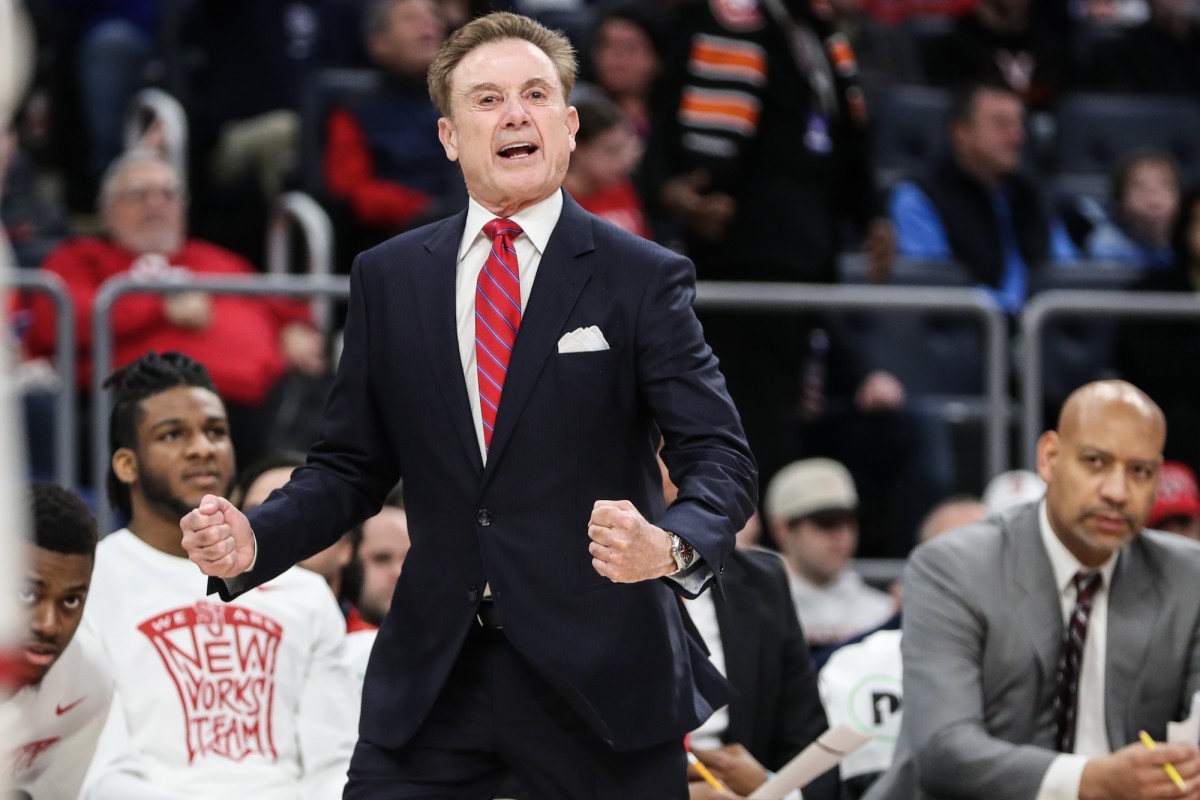
He noted that St. John’s has “s----y facilities” but did not blame them for the team’s struggles. He did blame the players for being unathletic and lacking toughness and tacitly blamed his staff for recruiting them. “We kind of lost this season with the way we recruited,” he said. “We recruited the antithesis of the way I coach, with speed, quickness, fundamentals, strength and toughness. It’s a good group, they try hard, they’re just not very tough.”
(Pitino did, of course, have the ultimate decision about who was added to his roster last offseason.)
Instant rebuilds can happen in modern basketball, but it’s a tricky calculus that can easily go wrong. That’s been the case thus far at St. John’s. And while nobody was demanding another in a series of Pitino miracles in Year 1, it should be noted that at age 71, he doesn’t have a long runway to get to liftoff.
The Johnnies rescued Rick from the hinterlands of the Metro Atlantic Athletic Conference, giving him one more shot at the big time. His return to the spotlight hasn’t gone as well as planned. When Pitino loses, he radiates disgust and discontent—which is one of the reasons he loses so infrequently. It’s going to be a long couple of days for the St. John’s players and coaching staff until they play the Georgetown Hoyas on Wednesday night.
Do not mess with the tournament
You heard the latest warning shots fired last week, when power-conference commissioners resumed chirping about ruining the beauty of a 68-team NCAA tournament (6).
It started years ago by expanding from the perfection of 64 to 68, selling the First Four concept in Dayton as a harmless little add-on. Now they want to add more so that the increasingly large power conferences can get more mid-pack teams into the field. Southeastern Conference commissioner Greg Sankey (7) planted that seed with Sports Illustrated in 2022, and it has grown since then. Several involved parties say the administrative momentum is there for expansion by anywhere from four to 12 teams—whether there is public support for it or not.
Ask around: Do any fans want a bigger Big Dance? Anyone clamoring for it? Not that The Minutes can hear.
The tournament is perfectly contained in three weeks of competition, laid out on a bracket that fits snugly on a printed piece of paper or a single computer screen. Expanding it would be like building a dream home and then deciding to put a tacky aluminum siding addition on the back. Bigger is not often better, and eventually bigger becomes worse. This would be worse.
Commissioners and athletic directors will trot out a line about percentage of participation in the championship. Currently, the field of 68 comprises 18.8% (8) of Division I—a lower percentage than some other sports have in their championship fields. But keep these two things in mind:
- The NCAA keeps letting more schools move up to Division I, from 326 two decades ago to 345 in 2011, when they inflated the field from 64 to 68, to the current 362. Stop the bloat.
- Every team that competes in its conference tournament has a chance to earn an NCAA bid. That’s the true start of March Madness, when leagues gather and compete in a single-elimination format for one of 32 automatic bids. So everyone who makes the conference tourney has that opportunity. (Fewer schools will get that opportunity as the mega-conference trend evolves next year, though. The Atlantic Coast Conference (9), for example, has already said it will cap its 2025 tourney at 15 teams, leaving three at home.)
Eventually, the needy and greedy power brokers of college sports will reach too far and it will backfire. Expanding the NCAA tournament is a risk that’s not worth the reward. Don’t mess with the best thing in college athletics.
The carousel is starting to spin
Last week, Ohio State fired seventh-year coach Chris Holtmann (10), effective immediately, and actually got some immediate results for it. That was the second power-conference job to come open during the season. More will follow. The Minutes looks at the lay of the land, and what might happen next (understand that Jay Wright is not happening anywhere):
Ohio State Buckeyes (11). Holtmann counterprogrammed the get-old, stay-old roster-building philosophy of the times and it backfired. They probably owe it to Diebler to see if he can keep repeating the magic of Sunday, but a team that currently is 13th in the Big Ten seems like an unlikely candidate for a complete resurrection.
The intriguing premise is this: If the Big Ten programs are going to be loaded with new revenue, can they money-whip the best coaches into leaving good jobs to come there? Ohio State is obviously investing massively in football for 2024 and beyond, but if the Buckeyes decide to go big for a basketball coach, could they land someone like Greg McDermott (12) of the Creighton Bluejays?
DePaul Blue Demons (13). Athletic director DeWayne Peevy fired Tony Stubblefield weeks ago, giving himself ample time to find someone who can do an extremely hard job. DePaul currently is 3–22 and hasn’t won in 2024. It’s somehow been 20 years since a once-proud program last played in the NCAA tournament. But they have a better arena situation and are working on a new basketball facility, so there are some things to sell to the legion of Chicagoland players who routinely go elsewhere.
Peevy is likely to go after an experienced head coach after the Stubblefield debacle. First inquiry should go to Josh Schertz of the Indiana State Sycamores, but that could be a crowded field of suitors. Niko Medved (14) has authored a fourth 20-win season in six years with the Colorado State Rams and would be worth a call. Or if Peevy wants to go straight outlaw, no chaser, he can thank the McNeese State Cowboys for laundering Will Wade for a year and (maybe) making him hirable elsewhere.
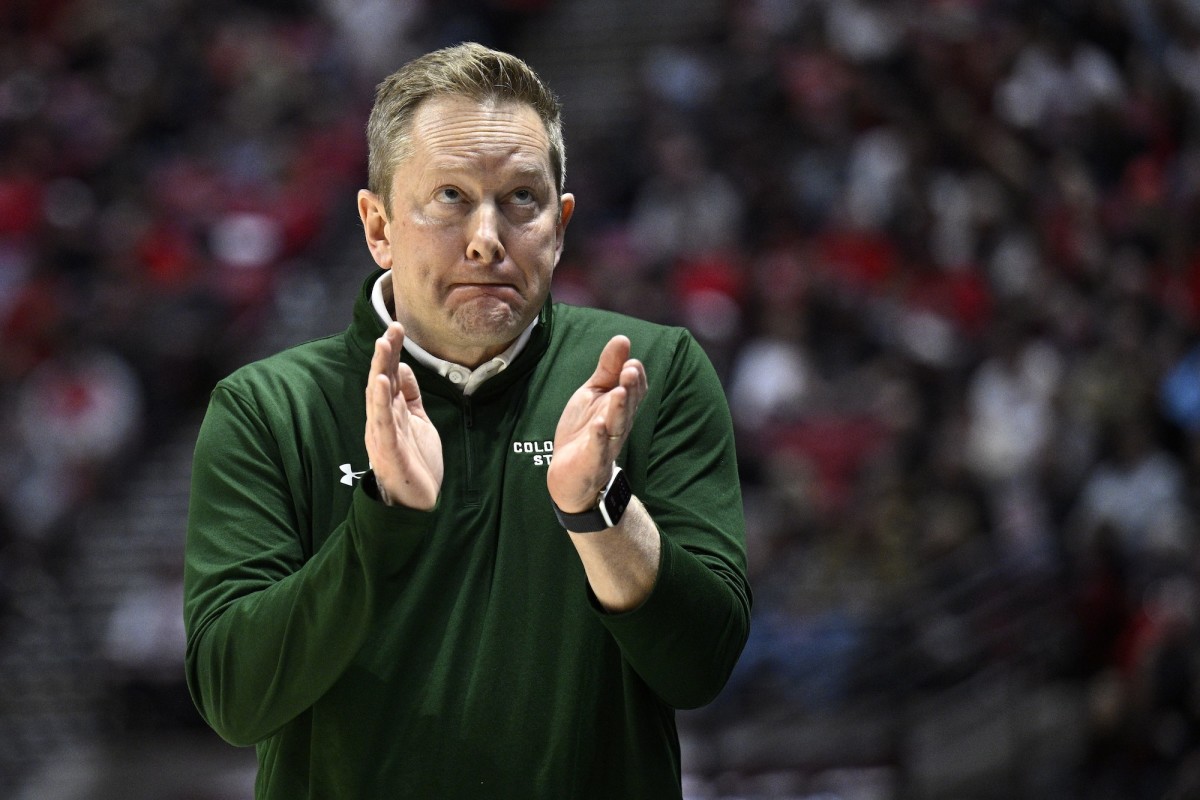
Louisville Cardinals (15). There is no “if,” here, only “when.” Kenny Payne actually lost to Stubblefield and DePaul earlier this season, in addition to the Chattanooga Mocs, Arkansas State Red Wolves and 15 other opponents. Payne’s two-season record is 12–46 at a place that has won multiple national championships. Bye.
If Louisville (or a Big Ten program) goes after the Florida Atlantic Owls’ Dusty May (16), would it trigger action from the Indiana Hoosiers? May is a Hoosier alum and Indiana native who took FAU to the Final Four last year and will have the Owls in the Big Dance again this year. Even if the school isn’t ready to fire Mike Woodson—who is having a very disappointing third season—the risk of losing May might alter the timetable.
West Virginia Mountaineers (17). Josh Eilert was the stopgap replacement after Bob Huggins torched his career last spring, and it hasn’t gone well. WVU is 8–17 and last in the Big 12, so there will be a change—and that change won’t be going back to Huggins.
This might be the place that gets Josh Schertz (18). Athletic director Wren Baker is likely to scan the mid-major ranks for rising stars, and Schertz certainly fits that definition. He was a massive winner at the Division II level and has Indiana State atop of the Missouri Valley Conference in his third season there.
Michigan Wolverines (19). Is Juwan Howard on his way out? It’s unclear, but his tenure is trending badly. The past two seasons have been a marked drop-off from the first three. This season, Michigan is last in the Big Ten and was just punked at home by the rival Michigan State Spartans. Howard also has had enough off-court fuss to further jeopardize his standing.
Same premise here as with Ohio State: Is Michigan willing to pay to pluck an established power-conference coach? Like, maybe T.J. Otzelberger (20) of the Iowa State Cyclones? His current team is 20–5, 9–3 in the brutal Big 12, churning toward a top-16 NCAA seed. He’s a 46-year-old Midwestern guy who recruits that region well, and he’s picked up the offensive pace a bit this year—which helps from a watchability standpoint.
One-third of the Pac-12 (21). Mike Hopkins of the Washington Huskies, Bobby Hurley of the Arizona State Sun Devils, Jerod Haase of the Stanford Cardinal, Wayne Tinkle of the Oregon State Beavers … they all could be on the chopping block at places that have given them plenty of run.
They all should probably take a run at Kyle Smith of the Washington State Cougars, whose program is facing an uncertain future after the demise of the Pac-12 (more on the Cougs below). But another name that should be of West Coast interest: Bryce Drew (22), coach of the Grand Canyon Antelopes. There are only two teams left with two losses: the UConn Huskies and Grand Canyon. Drew is 88–29 at the school and churning toward a third NCAA bid in four seasons. He also took the Vanderbilt Commodores and Valparaiso Beacons to the Big Dance.
Vanderbilt Commodores (23). Jerry Stackhouse is in Year 5 without an NCAA bid, with this season’s team spiraling to 7–18 overall and 2–10 in the SEC. The last game was a 35-point humiliation at the Tennessee Volunteers. Vandy is investing heavily in football facilities, but this is a school with a respectable basketball tradition—and more chances to succeed in that sport.
Every power-conference program in the South should be trying to get Amir Abdur-Rahim away from the South Florida Bulls. But if Vandy isn’t the place that can do it, there is another alternative right there in Nashville: Casey Alexander (24) is working toward an eighth-straight 20-win season in town, five with the Belmont Bruins and three before that with the Lipscomb Bisons.
Central Florida Knights (25). Johnny Dawkins has had one high-level team in eight years at UCF, nearly knocking off Zion Williamson and the Duke Blue Devils in the 2019 NCAA tourney. Now in the Big 12, the Knights are in danger of being swallowed by the competition. Given the daunting new terrain, and the sudden rise of South Florida, it could be time for UCF to make a move.
Former Xavier Musketeers and Louisville coach Chris Mack (26) is ready to get back in the game after two-plus seasons on the sideline. Could this be a landing spot for him? It ended badly for Mack at Louisville, but his record at Xavier was sensational.
Saint Louis Billikens (27). Until this season, Travis Ford had consistently won games here while consistently missing the NCAA tourney (one bid in six tries). Now the wheels have fallen off, with Saint Louis sliding to 9–16 overall, 2–10 in the Atlantic 10. Is that enough to make a change, or does Ford get another season to fix it?
A lot of coaches view that job as a sleeping giant. One who proved he could win big at an urban Catholic school: Tom Crean (28), who took the Marquette Golden Eagles to the 2003 Final Four. He’s been working in TV the past two seasons.
Why Washington State should be America’s team
The Washington State Cougars (29) should have your attention. And your ardent support. If ever a program’s rise has been poignantly timed, this is it.
The Cougars are 20–6, 11–4 and in second place in the Pac-12. They’ve won seven straight to move comfortably into most mock brackets, within range of grabbing their first NCAA bid since 2008. (The coach then: Tony Bennett. Klay Thompson hadn’t yet arrived on campus.) And they’re doing it in a moment where everything has collapsed athletically around Wazzu.
The Pac-12 abandoned the Cougars, leaving them and Oregon State for dead starting in 2024–25. Wazzu president Kirk Schulz (30) is doing his dead-level best to hold the rest of the power conferences hostage via his role as a College Football Playoff board member, maintaining the Pac-12’s voting and revenue rights even though it’s going to be a Pac-2 ghost ship of a league. The Minutes respects Schulz’s hustle and hopes he comes away with a massive sum of money.
In the meantime, his men’s basketball team is rolling. Coach Kyle Smith (31) was a savvy hire from the San Francisco Dons in 2019; he’s yet to have a losing season in Pullman, Wash. This year’s team is his best yet.
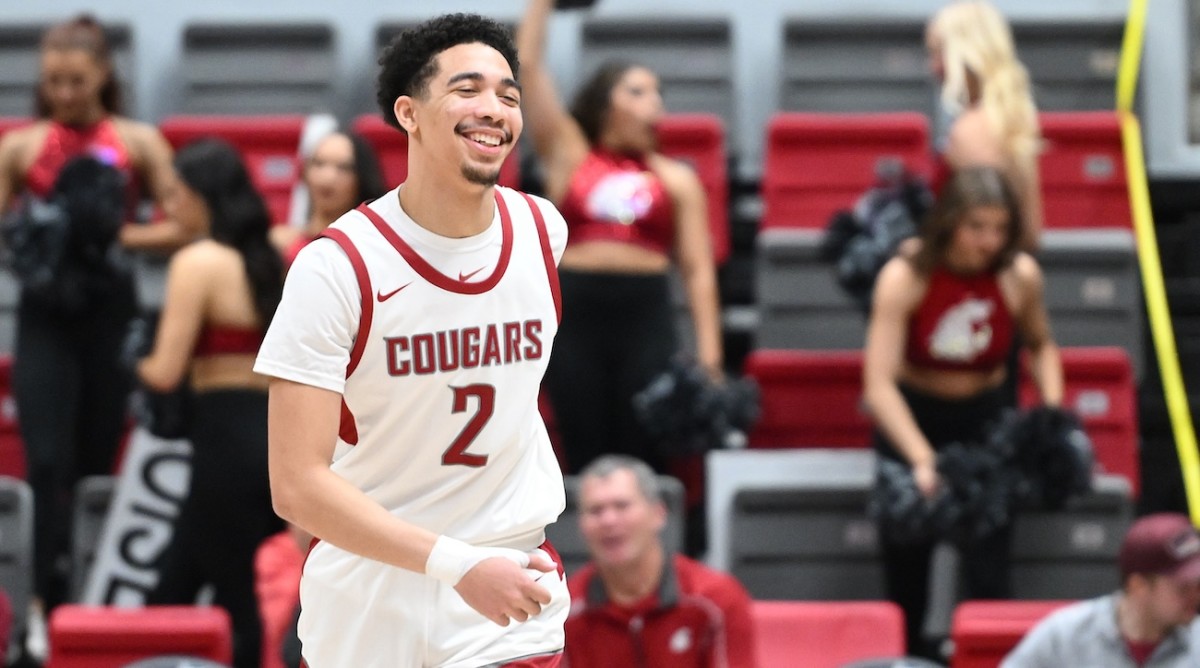
His best player is guard Myles Rice (32), a third-year freshman. Rice was redshirted in 2021–22, then was diagnosed with Hodgkin’s lymphoma and missed all of 2022–23. After going through chemotherapy, he was cleared to play this season and has blossomed. Rice leads the team in scoring (15.9 points per game), assists (3.7) and steals (1.7).
What the future holds for Washington State athletics is unclear and likely unpleasant. But the present tense for Cougars men’s basketball is a beautiful thing. If we can’t all root for this program and its star player, we’ve lost the plot.
Backdoor to the bubble?
If your favorite team spent months playing with its food instead of polishing up its NCAA tourney résumé, don’t abandon all hope. There is still time for a few of them to make a backdoor cut into bubble contention. Some of the candidates:
The Pittsburgh Panthers (33) are suddenly stacking wins—five in a row, improving them to 17–8, 8–6 in the ACC. They’ve earned two huge ones on the road, at Duke and the Virginia Cavaliers. A home loss to the Missouri Tigers hurts the résumé, though. Forward Blake Hinson is doing his part, hitting 14 of 26 three-pointers in Pitt’s last two games and averaging 34 points in wins over Virginia and Louisville.
Pitt’s current NET rating: 47. Current KenPom rating: 51. Quality-win opportunities ahead: road games against the Wake Forest Demon Deacons on Tuesday and the Clemson Tigers on Feb. 27.
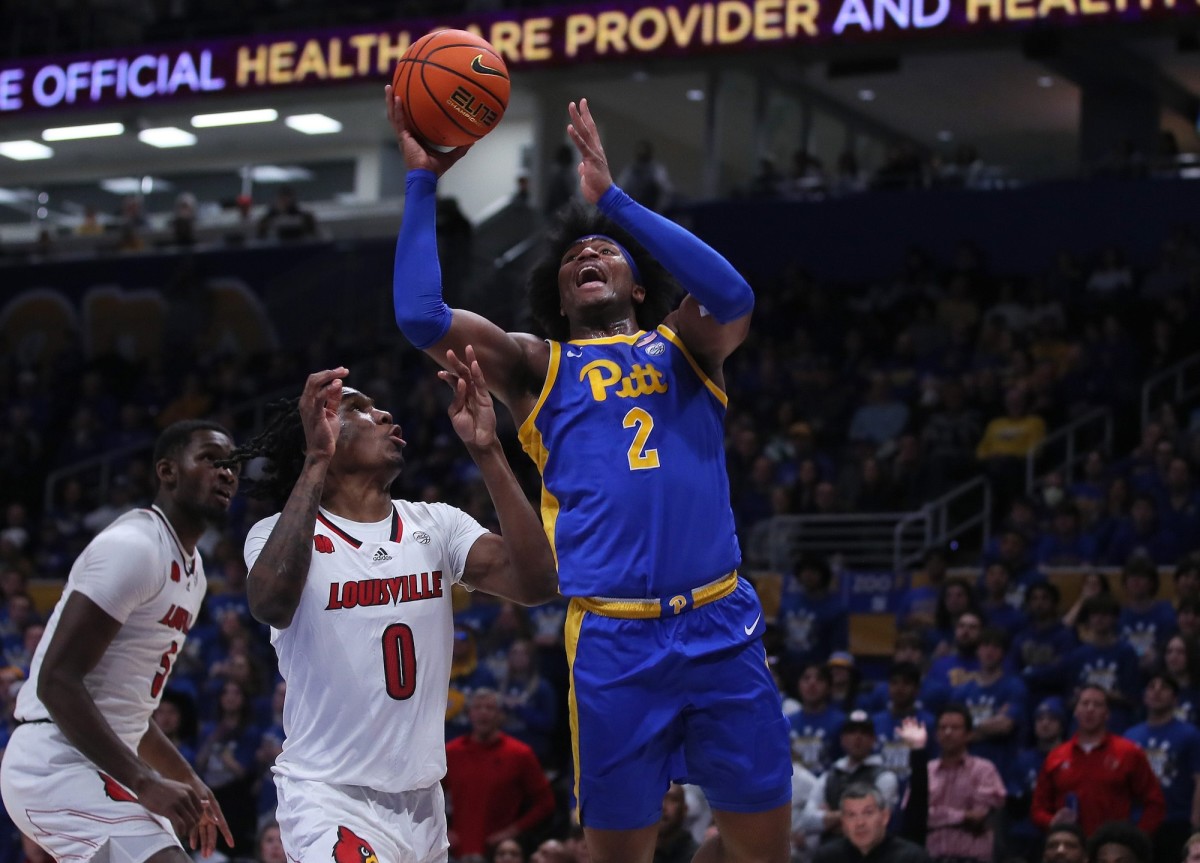
VCU Rams (34). They’ve won nine of their last 10 to reach 17–8 overall, 9–3 in the A-10, in their first season under Ryan Odom. The Rams are a game out of first in the loss column in a league KenPom rates eighth nationally. Biggest among those recent victories was over league kingpin the Dayton Flyers last week in Richmond, Va. A nonconference loss to the Norfolk State Spartans and an early A-10 loss to the George Washington Revolutionaries may be résumé killers, unless the wins keep coming.
VCU’s current NET rating: 71. Current KenPom rating: 76. Quality-win opportunities ahead: at the Richmond Spiders on March 2 and at Dayton on March 8. The Rams probably need to win out in the regular season and may still have work to do in the A-10 tourney.
Drake Bulldogs (35). They’ve won four straight in the Missouri Valley since losing at Indiana State, moving into a tie with the Sycamores for first. Drake has a neutral-floor win over fellow bubble dweller the Nevada Wolf Pack and split two games with Indiana State, plus a recent road win over the Bradley Braves. A loss to the Stephen F. Austin Lumberjacks in the Cayman Islands in November could come back to haunt them.
Drake’s current NET rating: 46. Current KenPom rating: 48. Quality-win opportunities ahead: Not much left in the regular season, although games at the Northern Iowa Panthers on Saturday and home against Bradley on March 3 would help. Drake might need to win out in the regular season and reach the Arch Madness final to earn a second straight bid and third in the last four seasons.
It is The Minutes’ stance that the Valley deserves two bids as long as both teams take care of business, Drake and the Indiana State Sycamores (36). They were 22–3 before losing two straight in upset fashion, but forward Jayson Kent missed one and a half of those two games with a concussion. He’s a vital rebounder and defensive presence on an undersized team. If Indiana State gets back on the beam with Kent in the lineup, that should be noted by the selection committee.
Minutes crush of the week
Harrison Ingram (37), North Carolina Tar Heels. Since the Stanford transfer’s arrival in Chapel Hill, the Heels have become a tougher team. The 6' 7", 235-pound junior was a highly touted high school prospect who has shown a willingness to do the dirty work.
Ingram has helped improve UNC’s defensive effort and teamed with big man Armando Bacot to provide a devastating one-two rebounding punch. (He has seven double-figure rebounding games in the last nine.) Meanwhile, Hubert Davis and his staff have brought out the perimeter shooter in Ingram—a career 31% shooter from three-point range at Stanford is up 10 percentage points this season. Hitting five threes in his first Duke-Carolina game was a nice flourish.
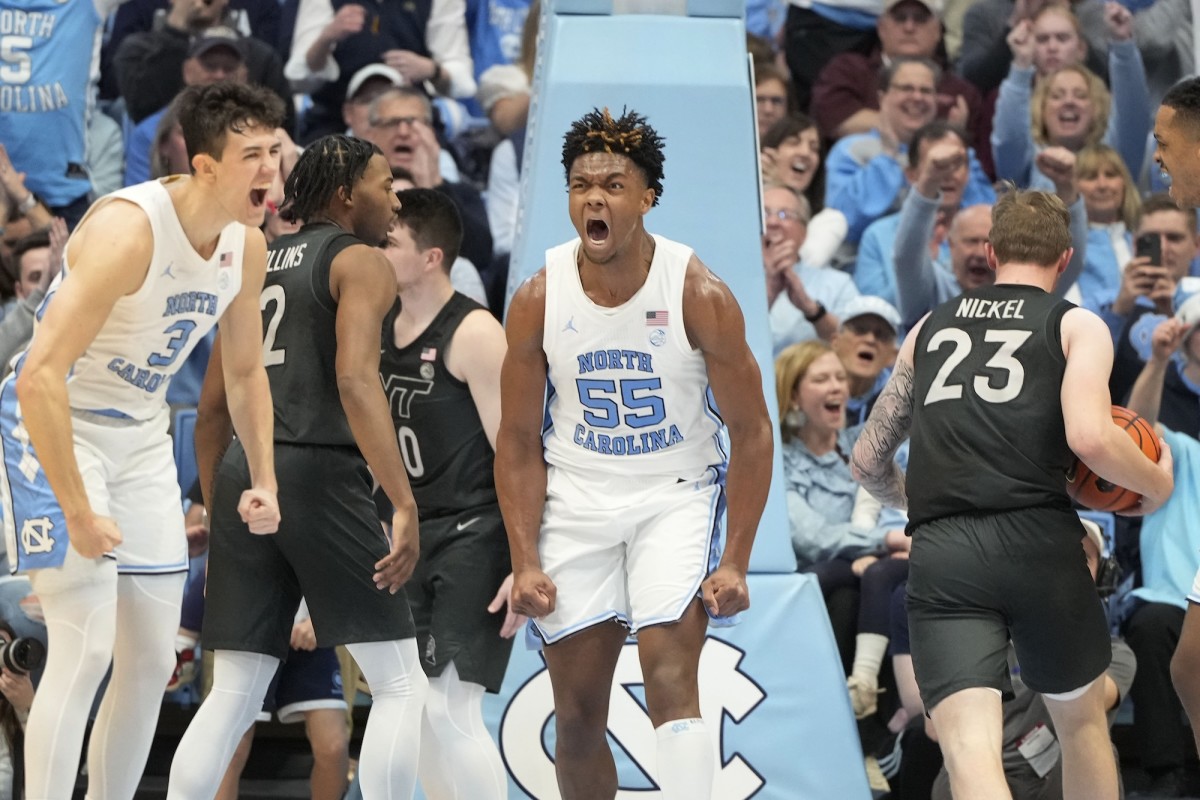
Coach who earned his comp car this week
Amir Abdur-Rahim (38), South Florida Bulls. Is this the guy everyone should be trying to hire? After working a miracle at Kennesaw State, taking the Owls to their first-ever NCAA bid last year, he’s arrived in Tampa and performed a quick makeover of a dormant program.
Armed with plenty of transfers and a couple of key holdovers, the Bulls have rocketed from four straight losing seasons to 19–5 and the top of the American Athletic Conference. No, it’s not the same AAC it used to be without Houston, Cincinnati and UCF, but this is still uncharted territory for USF, which is striving for its first NCAA bid since 2012. (A 2–4 start with losses to the Central Michigan Chippewas and the Maine Black Bears could mean the Bulls need to win the league tourney.)
The ultimate proof of growth came Sunday, when South Florida had its first sellout since 2001 when Florida Atlantic came to town. The Bulls roared to an overwhelming 25-point lead, then sweated out the final minute when the Owls closed within a point. South Florida closed it out for its 11th straight win.
Coach who should take the bus to work
Penny Hardaway (39), Memphis Tigers. In mid-January, the Tigers were 15–2 and one of the buzziest teams in the sport. Now they’re 18–8 and coming off a dreadful, no-show performance at SMU, giving up 106 points and losing by 27.
Memphis has tanked defensively in losing six of its last nine. The Tigers are near the bottom of the AAC in league play in effective field goal percentage defense and defensive rebounding. They’re giving up open threes and second-chance points with regularity.
Hardaway has proven to be a better coach and program builder than some suspected and should record a sixth-straight 20-win season. But a third-straight NCAA bid is slipping away unless Memphis can fix itself. The Tigers probably need to win the AAC tournament to make the field.
Buzzer beater
When hungry and thirsty in Norman, Okla., The Minutes recommends a visit to The Mont (40). They’ll serve up some fine Mexican food and a dazzling array of fanciful cocktails or a local craft beer. Check it out and thank The Minutes later.
